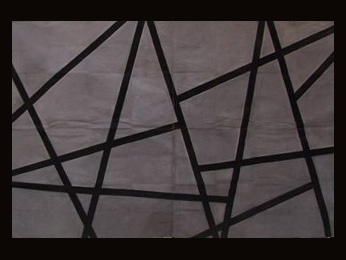The Creative Mind Reader – Pietro Finelli
October 5th, 2007 – October 31st, 2007
The Creative Mind Reader – Pietro Finelli
Artist: Pietro Finelli
The Creative Mind Reader
Finelli himself chose the title for this exhibition as he borrowed it from an article by Michael Kimmelman on Joseph J. Schildkraut, published on The New York Times (December 31, 2006); Finelli was fascinated by it, as it summarized into a few words the likewise fascinating meaning of Dr. Schildkraut’s work, at least as far as the research on melancholic depression in art is concerned.
Finelli, as a true neurologist of images, offers through this exhibition a condensed sampling of his stratified universe, showing paintings (abstract as well as figurative), pastels, drawings, objects. Forms or sign systems, abstract and figurative alike, are intertwined with that of art (as aesthetics, sign code) and of politics.
It is the “political necessity” indeed that in Finelli’s instance determines the added value, makes the difference in comparison with others having worked on this system. The abstraction system becomes, in fact, charged of a necessary action, caused by the contingent situation, of cleaning up in the wardrobe of contemporary art. A “Homeric cleaning up” to use a famous definition used by Le Corbusier for A. Loos. This necessity comes together with the political element, meant as polis, the art of city government (that is art of educating man). And this necessity, as Finelli’s works seem to prompt, comes from the danger state of human existence.
Art cannot and would not (under pain of its transformation into a mere communication medium) adhere to a status quo, continuously engulfing and grinding, from the inside, every attempt at resistance, or estimated so. It is for this reason that those “small attempts” that each individual or system can display, can check this one-sided and self-destructive mentality. A defense taking shape and substance from the small everyday gestures the individual adopts, to those highly formalized of art, science or economics.
It is not the stating of stale styles such as art for art’s sake or political art, old and altogether meaningless by now. It is about the individual little cleaning up of conscience everyone can manage, within his own code (it might be art, as it happens with this exhibition, or it might be science, by eliminating party utilitarianism and by turning to a more correct use of resources).
The video “The Painter”, 30’, 2006 will be shown. It is a video where the moving eye of the video camera “enters” the apparently still eye of the painted images, but it is, on the contrary, introverted, thus creating a dialogue on visibility.
As A. Dannatt puts it “Finelli¹s practice is in fact one of the most densely theoretical currently in operation, its grounding and structure entirely dependent on this frame of theory. The core of the work is pure abstract philosophy, however its end product, the flowers grown upon this rigorous trellis, may be lush and heady and overpoweringly rich in their bouquet, betraying scant trace of their roots.
In this way Finelli¹s active intellectual research might be compared to those rigorous mathematical-physics programs whose published results are, by no hazard, then termed Obeautiful¹ within the strict scientific sense of that word “(in The organic machine or Pietro’s paradox, 2005).
The Creative Mind Reader




